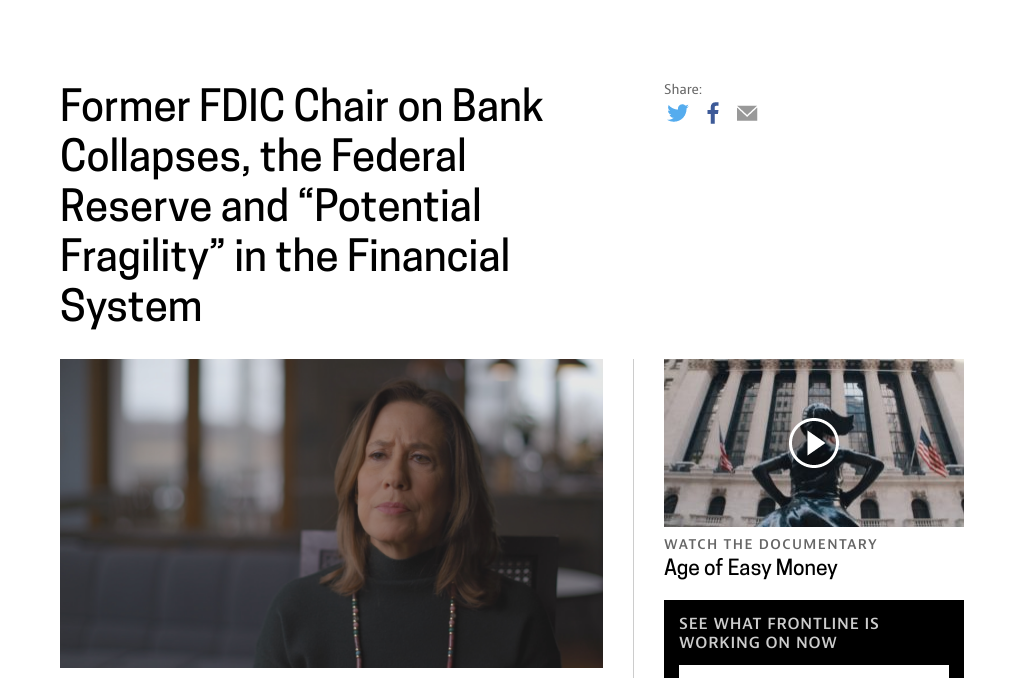The collapse of Silicon Valley Bank (SVB) is the second largest bank failure in U.S. history.[0] Founded in October 1983, SVB specialized in meeting the credit needs of technology startup companies and venture capital firms.[1] It had a total of $209 billion in assets as of December 31, 2022, with more than half of its loans going to venture and private equity firms.[2]
The bank got into trouble due to large unrealized losses on government securities, which became a problem when the Federal Reserve raised interest rates and the value of securities dropped.[1] SVB’s parent company, SVB Financial Group, sold $21 billion of assets at a $1.8 billion loss and was going to sell $1.75 billion worth of shares to help plug the hole.[3] Depositors attempted to withdraw $42 billion, rendering the financial institution insolvent.[4]
Analysts had been examining SVB for a downgrade and Raging Capital Ventures noted the bank’s catastrophic interest-rate problems in January.[5] Senator Bernie Sanders and Senator Elizabeth Warren both argued that the bank’s collapse was a direct result of a 2018 deregulation bill signed by Donald Trump that they had both opposed.
The FDIC stated that all insured depositors will have full access to their insured deposits, while uninsured depositors will receive an advance dividend within the next week.[6] Big banks, such as JPMorgan and Goldman Sachs, are now placing $30 billion in First Republic Bank, one of the other embattled regional lenders.[0]
The larger context of the SVB failure is what it reveals about the current state of banking in the United States. Large banks are in better financial shape than small ones, but are still vulnerable to liquidity draining from them due to weak risk management practices and high uninsured deposits.[7] To avoid future collapses, it is essential for regulators to oversee the banking system and ensure that banks are managing their risk, interest rate risk, and deposit base appropriately.[8]
0. “Silicon Valley Bank’s Distress Wasn’t Reflected in Credit Ratings” The Wall Street Journal, 17 Mar. 2023, https://www.wsj.com/articles/silicon-valley-banks-distress-wasnt-reflected-in-credit-ratings-93cd9dff
1. “What to Know About Trump-Era Bank Deregulation and Bank Failures” FactCheck.org, 16 Mar. 2023, https://www.factcheck.org/2023/03/what-to-know-about-trump-era-bank-deregulation-and-bank-failures/
2. “If the Feds fail to find big banks to buy SVB and Signature, the likeliest buyers are the one group they don’t want to sell to” Yahoo Life, 17 Mar. 2023, https://www.yahoo.com/lifestyle/feds-fail-big-banks-buy-222917693.html
3. “After Twitter played a massive role in a historic $42 billion bank run, Elon Musk mused it was like 1929” Fortune, 15 Mar. 2023, https://fortune.com/2023/03/15/twitter-role-in-svb-42-billion-bank-run-elon-musk-mused-it-was-like-1929/
4. “Silicon Valley Bank’s failure, the government’s depositor rescue, and venture capitalists’ incredible tantrum.” Slate, 13 Mar. 2023, https://slate.com/technology/2023/03/silicon-valley-bank-rescue-venture-capital-calacanis-sacks-ackman-tantrum.html
5. “We Know Who’s to Blame for the Silicon Valley Bank Failure” The Atlantic, 16 Mar. 2023, https://www.theatlantic.com/ideas/archive/2023/03/svb-collapse-fed-regulation-financial-system-safety/673401
6. “PR-16-2023 3/10/2023” FDIC, 12 Mar. 2023, https://www.fdic.gov/news/press-releases/2023/pr23016.html
7. “March 2023 Newsletter: A Look at Bank Solvency” Lyn Alden, 13 Mar. 2023, https://www.lynalden.com/march-2023-newsletter/
8. “Former FDIC Chair on Bank Collapses, the Federal Reserve and “Potential Fragility” in the Financial System” PBS, 16 Mar. 2023, https://www.pbs.org/wgbh/frontline/article/former-fdic-chair-bank-collapses-federal-reserve/
